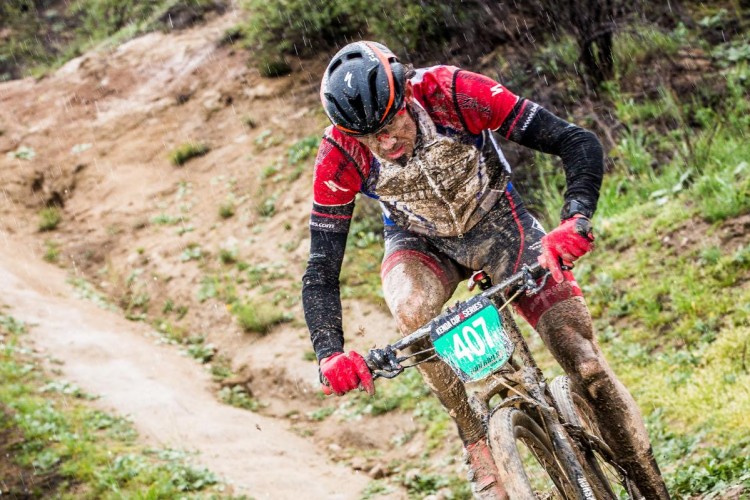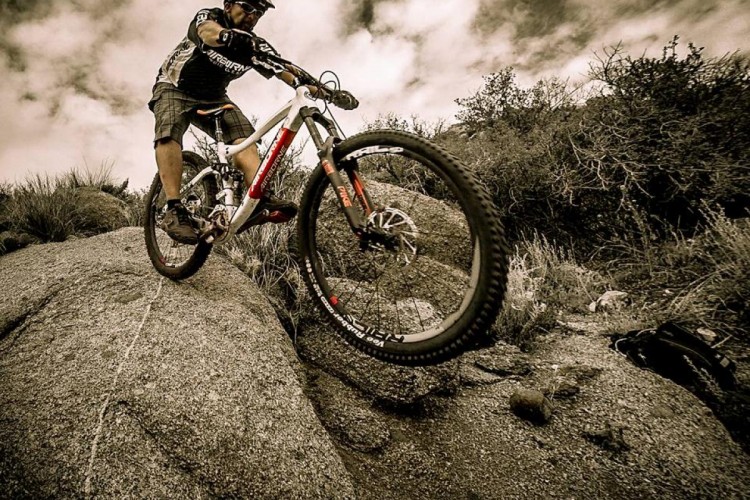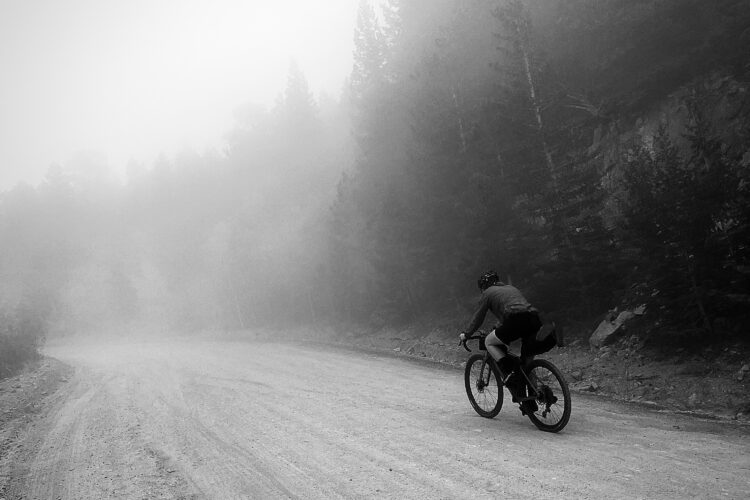As many of you are aware, I am currently training for the Cohutta 100. I have wanted to dabble in ultra endurance mountain biking for a few years now, and this spring I decided to go for it!

Yes, this is the same dirty century Jeff raced last year. While I didn’t want to be a copy cat and do the exact same race he did, after perusing a list of dirty centuries around the nation, the Cohutta 100 seemed to be the best choice. Personally, the main factors in my decision came down to timing and location. If I’m going to be putting in long training days week in and week out for months on end, I definitely didn’t want to try to do that during the hot, humid summer months here in Georgia. Looking at the list, there were one or two races early in the spring… and then most of the rest were later in the year. Also, there are only a few dirty centuries here in the Southeast.
The Cohutta 100, taking place on April 27th, also happens to be the first 100 miler of the year which means I can train over the winter instead of the summer. And while I’d love to do an ultra in Colorado or Oregon, driving less than two hours to the starting line for the Cohutta will be so much easier (and cheaper) than traveling across the nation.
While it’s still a long time until race day and I’m definitely not an ultra endurance expert, I just thought I’d share three unexpected things that have been extremely helpful in my training.
Road Biking
I am pretty new to the paved side of bike riding, having received my first road bike as a birthday present this past November. While I never expected road biking to become my first love, I thought that I might only ride it once every week or two. Over the past two months (January and February), however, there is no way I would have been able to log decent miles if I had just been mountain biking.

While we had a pretty mild winter here in North Georgia last year (2011/2012), this winter has seen several cold snaps (complete with snow)–but even worse, lots of rain. For the past couple of months, we’ve been receiving rain on a very regular basis. About the time the singletrack starts to dry out we seem to get hit with yet another thunderstorm. I can probably count the number of singletrack rides I’ve done in the last two months on one hand. It hasn’t been pretty. As of the time of this writing we are still dealing with serious rain and cold temperatures.
However, thanks to the road bike, I’ve been able to hit the pavement whenever the trails and gravel roads are too soggy to ride. While I’ve tried to avoid riding when it’s actually raining (it’s really cold this time of year), weather has become much less of an inhibition to my training thanks to the road bike.
Also, road biking has proved to be extremely convenient. Instead of having to load up all of my gear into the truck, drive 20-30 minutes to the trailhead, unload, ride, reload, and drive back, when road biking I can throw on my gear and just roll from the house.
Granted, after two months of mostly road biking I am starting to get a little bored of it. Spring, we’re ready for you whenever you decide to show up!
For more on why you should try road biking, check out Darryl’s article titled “What? You want me to ride a road bike?“
Strava Challenges
I’ve been a Strava user for about a year now, and I generally use it simply to track my own rides and my personal progress. I try not to get too hung up on the KOM boards… mainly because I’m really not that fast.

One part of Strava that I’ve recently started to appreciate is the challenges section. For some reason, winning a badge comprised solely of computer-generated pixels that will appear in my Strava feed for about a day and then disappear into the digital ether has proved extremely motivating. (As far as I’m aware, there’s not even a page to show off the badges you’ve earned.) Several of the Strava challenges have pushed me to new heights much faster than I would have attempted otherwise.
In January, Strava held the Base Mile Blast challenge. Badges were awarded at 200 mile increments: 200, 400, 600, 800, and 1,000. I knew I could easily hit 200 miles, but going for 400 in one month, especially right at the beginning of my training, seemed like a stretch. It all came down to a 30.9-mile ride on the last day and I was able to successfully hit the 400-mile mark! About 100 or so of those were on my mountain bike, and about 300 were road bike miles.

Then, on the 24th of February, I successfully completed the Quarq Power Trip challenge. The premise was relatively simple: do 100 miles in one ride on the weekend of February 23-25. While I did it on my road bike, this was officially my first century (and the longest I’ve ever ridden a bike)!
Currently, I know I’m not going to make the February Fifteen challenge. The weather and some other gear issues conspired against me this week, and I am only up to about 8.5 hours of riding. However, Giro’s Train like Taylor challenge starts today–again, this will be a tough one, but maybe it’s just what I need to stay motivated! It will also be more favorable to mountain biking: this challenge counts hours instead of miles.
Gu Energy Products
While I don’t have my nutrition totally dialed in yet, I have developed a pretty dependable system and have been relying heavily on products from Gu. And it hasn’t just been one thing, either–I’ve been using a wide assortment of their products:
- Standard Gu gels (of various flavors)
- Gu Roctane gels
- Gu Chomps
- Gu recovery drinks
- Gu electrolyte drinks

I really enjoy the standard gels (as well as the Roctane), and find that they are great for a boost of energy. However, on long, 6+ hour rides, gel just isn’t enough to fill my stomach up. As a result, I’ve been alternating gels with granola bars (or other food with more substance) to get some of the energy benefits from the Gu and the filler benefits (among other things) from the bars.
I’ve also really enjoyed the Gu Chomps. They are still pretty easy to digest and hit the blood stream quickly, but they have a lot more substance to them than gels and give you something to “chomp” on. Also, since one package has a bunch of blocks, if you are on smooth terrain you can spread them out instead of only eating once an hour.
The chocolate Gu recovery drinks have been great too. Mixed with milk, it basically tastes like a chocolate milk shake that isn’t overly sweet: mmm, tasty! Perfect for getting calories back into your system quickly.
These are just a few things that have been helping me during my training, and I’ll be sure to post more as I go! Now it’s your turn: have you ever done any ultra endurance mountain biking? Please share your tips with us! Do you have any questions about training for an ultra endurance event?





















18 Comments
Mar 7, 2013
The Iron Mountain 100 is actually only 62 miles, so 8 hrs. is not real fast. One note on the course though-------- the closest thing to a flat section of the course is the 3 mile rail trail warm up, and a few miles of pavement, the rest; pure mountain singletrack and mountainous gravel roads.
Mar 4, 2013
Mar 7, 2013
Mar 5, 2013
Mar 4, 2013
Mar 4, 2013
In the past, though, two things that have really helped keep me motivated:
1) Riding with other people. Sometimes it's hard to recruit people for the entire ride, but even doing part of the ride with someone else is a big motivator.
2) Listening to music. While I generally like to start off with 2-3 hours of silence to enjoy the outdoors and clear my head, after that it can get deafening. Putting on some rocking tunes really helps keeps the adrenaline pumping and helps give me something to think about and focus on besides how much pain I'm in, lol !
Mar 5, 2013
Mar 4, 2013
Even though I'll probably never do it again, I'm real glad I did it. One of those been there done that, and would do it all over again.
Food is the real trick, I did it mostly on Cliff Blocks and Honey stingers, had them mixed together, the rest was a quick bite of something at the aid stations.
Main thing; pace yourself, and have FUN
Mar 5, 2013
Mar 4, 2013
Dang, just over 8 hrs... my goal is to do sub-12 hours. 8 is WAY out of my reach! Took me about 7.5 hours to do my first century on a ROAD bike. Of course, there was 10,000 feet of climbing, so that didn't help things.
Mar 5, 2013
Mar 4, 2013
Mar 4, 2013
Mar 5, 2013
Also try training in adverse weather, so if the weather is bad for the race you will be ready for it. Last year my race started out very hot,and humid. Was amazed at how many people dropped out by the first aid station. ( about the time the weather got better) I had done a lot of riding in some very hot weather, so my body was ready for it.
Mar 4, 2013
Mar 4, 2013
Mar 7, 2013
So last season I made it a priority to make it to the track once a week where I did some interval training. I would run mostly 800 meter repeats, as fast as i could each time, with 2 min rest in between. Once my legs got strong enough to deal with two interval work outs a week i was doing 2x 800m, then 4x 400m, then 4x 200m with a minute rest in between each one. That entire workout only takes 24 minutes total, and it straight ruins you : )
Here are the benefits i experienced on the MTB from my interval workouts
1) Endurance. The progress i was making on my 800m sprints from week to week was unreal. I also finished my first 100 MTB race in under 9 hours (rusty ride 100, MN) and felt great at the end.
2) Developed my hamstrings so my legs had more muscle balance. The hammies are often neglected and dominated by the quads on the bike.
3) I lost a good 5 pounds while adding muscle. And carrying an extra 5 lbs over 100 miles definitely adds up. The high intensity workouts are a great way to get rid of your extra baggage.
Hope this can help. and keep up the hard work and let us know about your progress. Its very motivational.
Mar 8, 2013